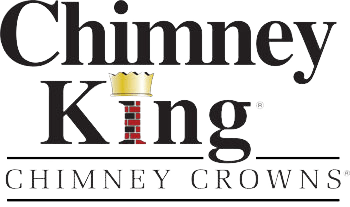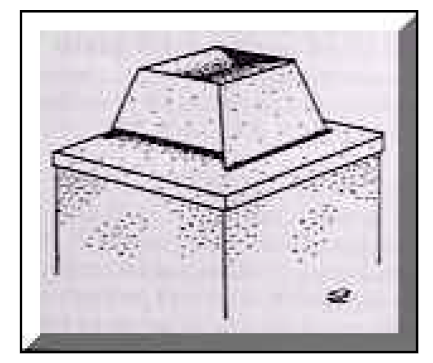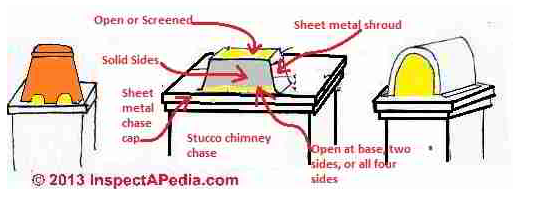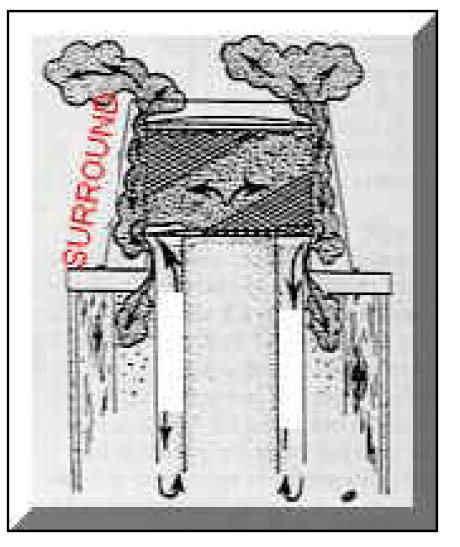Lets take a look at the requirements by code.
UNIFORM BUILDING CODE: Sec. 104. (a) APPLICATION TO EXISTING BUILDINGS AND STRUCTURES.
States, "Buildings and structures to which additions, alterations, or
repairs are made shall comply with all the requirements of this code for new facilities".
It is in common agreement that if there are any repairs to be made on a listed fireplace system, the entire system is to meet the current requirements by code. This reasoning is due to the fact that the fireplace was required to comply with the U.L. 127 test. This test is to determine the minimum safe installation requirements. Only the listed components that were tested with that fireplace may be used in conjunction with the fireplace system.
Any change or modification affects the entire system and may void the listing. Therefore the fireplace is viewed as a whole system. If there was a change in the code requirements, and any repairs were to be performed on the system, the system would be required to comply with current code as per U.B.C. Sec. 104.
Sec. 105.ALTERNATE MATERIALS AND METHODS OF CONSTRUCTION.
States "It is not the intent of the code to prevent the use of any materials or methods of construction not specifically prescribed by this code". It also states that "The building official may approve any such alterations
provided the building official finds that the proposed design is satisfactory and
complies with the provisions of this code and that the material, method or work offered is, for the purpose intended, at least the equivalent to that prescribed in this code in suitability, strength, effectiveness, fire resistance, durability, safety and sanitation".
The building official shall also require proof or evidence be submitted to back up any claims that may be made regarding the alternate material use.
"The details of any action granting approval of any alternate shall be recorded and entered in the files of the code enforcement agency."
Sec.106. MODIFICATIONS.
"When there are
practical difficulties involved in carrying out the provisions of this code, the building official may grant modifications for
individual cases.
The building official shall first find that a special individual reason makes the strict letter of this code impractical
and that the modification is in conformance with the intent and purpose of this code
and that such modification does not lessen any fire-protection requirements or any degree of structural integrity"
Again, "The details of any action granting modifications shall be recorded and entered in the files of the code enforcement agency".
Having spoken to many City and County jurisdictions .... records allowing alterations or modifications of
the factory-built fireplaces as required in U.B.C. Sec. 1 05 & 106 have yet to be found.
Sec.3702. DEFINITIONS. "FACTORYBUILT FIREPLACE.
is a listed assembly of a fire chamber, its chimney and related factory-made parts designed for unit assembly without requiring field construction. Factory-built fireplaces are not dependent on mortar-filled joints for continued safe use".
Sec. 3705. (a) FACTORY-BUILT CHIMNEYS AND FIREPLACES.
"Factory-built chimneys and factorybuilt fireplaces shall be listed and shall be installed in accordance with the terms of their listings and the manufacturer's instructions as specified in the Mechanical Code".
UNIFORM MECHANICAL CODE, Sec. 912(a). FACTORY-BUILT CHIMNEYS.
"Factory-built chimneys shall be installed in accordance with the terms of their listing, the manufacturer's installation instructions and the applicable requirements of
this code".
What this all means is
we cannot make changes for cosmetic or architectural reasons when those changes are in violation of any adopted code or may affect the safety of a factory-built fireplace system.
The metal prefabricated fireplaces are listed units. This means that they are designed and tested to conform to the Underwriters Laboratories safety standard UL 127 for factory-built fireplaces and shall be installed as per the findings of the listing and the manufacturer's requirements. Nowhere does it state in the code or installation manuals that alterations are allowed.
There are a few fireplace manufacturer that technically, had a truly tested and approved shroud system. It was tested on the fireplace at time of listing and was listed as an approved component in the installation manual. Please note that all of these shrouds have been discontinued.
There was one company that did not manufacture fireplaces but tested a group of shrouds separate from the fireplaces. Three were approved for use with triple wall listed low heat chimney systems. Two were approved for use with solid packed (insulated) listed low heat chimney systems .
There are currently several decorative surrounds approved for use by fireplace manufacturers. The construction and application of these system are very restrictive and must be performed precisely. These surrounds and chimney covers must be built in a miff or image of its design.
The use of unapproved and untested shrouds is much more common.
A closer look will reveal that there are arguments as to whether or not the shrouds that were tested separate from the systems should of been allowed. The following information should answer that question.
The installation manuals list all requirements for each individual fireplace. All requirements from these manuals are based directly off of the UL 127 standard test, which is uniformly accepted by all model-code agencies.
The installation manuals typically incorporate a disclosure at the beginning of the booklet. This statement generally states:
"These components and fireplace are safe when installed according to this installation manual.
Unless you use the manufacturer's components, which have been designed and tested for the fireplace system, you may void the listing and the manufacturer's warranty. Any such action may cause a fire hazard".
"The manufacturer's warranty will be voided, and the manufacturer disclaims any responsibility for, the following actions:"
(a)
"Modifications of the fireplace, components, doors, blower fans, air inlet system and/or damper control".
(b) "Installation other than as instructed by the manufacturer".
(c) "Use of any component part not manufactured or approved by the manufacturer in combination with the manufacturer's fireplace system".
To summarize the situation, the codes have not changed regarding the metal factory-built fireplaces in a great many years. They have been required to be tested and all installation requirements are based off of the findings of these tests.
The use of any component that was not tested with the particular model fireplace being installed constitutes a code violation, and disregards all warnings and requirements by the manufacturer. This practice may very well constitute a fire or safety hazard.
Only listed components may be used on or in conjunction with any metal prefabricated fireplace. Code or manufacturer does not permit the use of any unlisted component.
The code and requirements of the manufacturer are very clear yet there are still some who wish to disregard these facts.
Installation as per the manufacturer's instructions, and the applicable code is the only method that will ensure the proper and safe installation of a factory-built fireplace.
Copyright 1996 by Dale W. Feb. All rights reserved.
Reference:
http://www.fireassociates.org/media/shrouds_surrounds.pdf



